One is “Gigil”, the Feeling of Being So Overwhelmed by Cuteness that It’s Unbearable.

The English language never sits still, and the latest batch of additions to the Oxford English Dictionary proves it’s getting bolder, cheekier, and more global than ever. From Irish slang and South African street talk to delicious Southeast Asian dishes and everyday phrases from the Philippines, these 42 new entries reflect how language evolves when people, culture, and humor collide.
To celebrate, we’re breaking down each word dictionary-style—but with a twist. Every entry comes with a short, real-world example involving animals (because, honestly, everything’s better with a goat, a cat, or a parrot involved). Some of these words might already be in your vocabulary, while others are bound to surprise you. But one thing’s for sure: by the end of this list, you’ll walk away with a few new favorites, a craving for kaya toast, and possibly a deeper respect for goats with fashion sense.
1. Alamak

/ˈɑː.lə.mæk/ — interjection: An exclamation used predominantly in Malaysia and Singapore to express sudden surprise, shock, dismay, or outrage. Comparable to the English “Oh no!” or “Oops!”, alamak is deeply embedded in the colloquial speech of these regions. It reflects the cultural nuances of reacting to everyday mishaps and unexpected moments. From casual conversations to online expressions, alamak offers a colorful way to dramatize everything from a dropped phone to a missed bus.
During a routine feeding session at the Singapore Zoo, a zookeeper accidentally left the gate to the aviary slightly ajar. Noticing the oversight, a group of parrots seized the opportunity to explore beyond their enclosure. Upon realizing the birds’ adventurous escape, the zookeeper exclaimed, “Alamak! The parrots are out!” The vibrant birds fluttered around the zoo, much to the amusement of visiting schoolchildren. The birds eventually returned—but not without a little showmanship.
2. Bachata

/bəˈtʃɑː.tə/ — noun (now globally used English): Originally from the Dominican Republic, bachata is a genre of music and dance known for its romantic lyrics and intimate movements. With roots in bolero, African rhythms, and Latin American storytelling traditions, bachata has grown from marginalized beginnings into a worldwide cultural force. Its rhythm is slow and sensual, with a signature side-to-side step and hip motion that makes it a favorite in dance clubs and festivals alike.
In a plaza in Madrid, a street musician strummed the first few chords of a bachata tune. A couple nearby, both in their sixties, exchanged a grin and stepped into rhythm as if pulled by muscle memory. A stray dog trotted over and flopped down nearby, tail thumping to the beat. The music swirled through the air, blending generations, continents, and species in a shared love for something irresistibly human.
3. Blaa

/blɑː/ — noun: A soft, white bread roll that is particularly associated with Waterford, a city in the southeast of Ireland. The blaa has a distinctive fluffy texture and a light, powdery crust, making it a staple in Waterford’s culinary tradition. Typically enjoyed as a breakfast item or for lunch, it is often filled with butter, various meats, or cheeses. The origins of the blaa date back to the late 17th century, and it is believed to have been introduced by French Huguenots who settled in the area. Today, the Blaa holds a protected designation status, ensuring that only those produced in Waterford can bear the name.
On the back patio of a Waterford café, a customer sat down to enjoy a bacon-and-blaa sandwich while their terrier dozed contentedly beneath the table. As the customer took a bite, a crumb fell to the ground—and in a flash, the dog was alert, tail wagging, eyes fixed on the prize. The blaa’s fluffy center seemed just as appealing to the pup as it did to its owner. Chuckling, the customer tore off a clean corner of the crust and handed it down. The dog gently took the offering, confirming what Waterford locals already knew: even four-legged critics can appreciate a good blaa.
4. Class
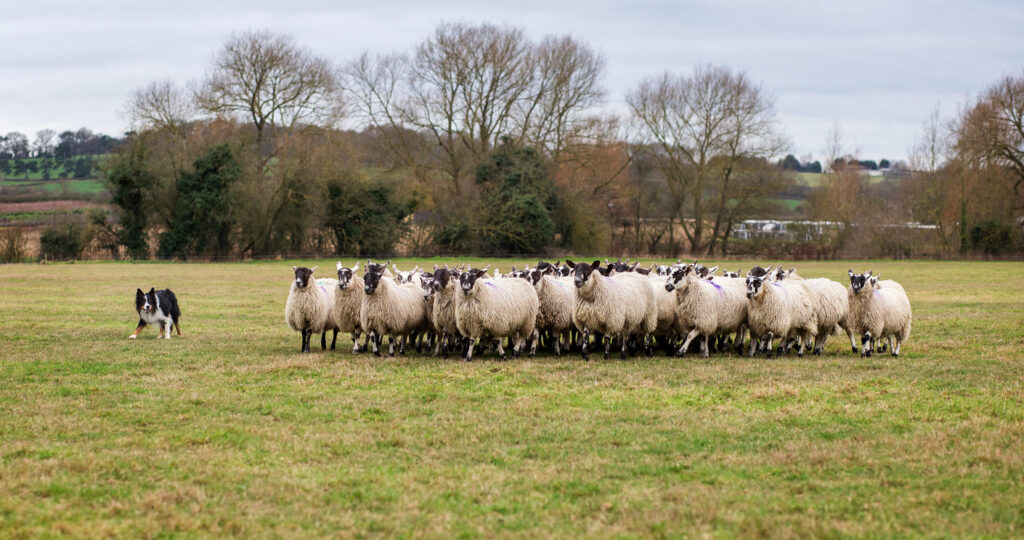
/klɑːs/ — adjective: In Irish English, “class” is an informal way to say something is excellent, top-tier, or highly impressive. Whether describing a song, a film, a night out, or even a great sandwich, it conveys enthusiastic approval. The term is widely used across Ireland in casual speech, particularly among younger generations, but it has long-standing roots in regional slang. “Class” doesn’t just mean “good”—it implies something stood out, hit the mark, or left a lasting impression. Its simplicity makes it flexible, and its tone often carries warmth, admiration, or excitement, depending on the context.
At a sheepdog competition in the Irish countryside, a skilled dog moved with incredible precision, responding to each whistle from its handler without hesitation. As the flock glided neatly into the pen, a group of spectators nodded in appreciation. One of them murmured, “That was class,” capturing the admiration felt by everyone watching. In moments like these, the word becomes more than slang—it’s a badge of honor for a job done flawlessly, whether the subject walks on two legs or four.
5. CR

/siː ɑːr/ — noun: In Philippine English, “CR” stands for “comfort room”—a common term for a bathroom or toilet. Though it might sound formal to outsiders, CR is the standard and most widely used term in both casual and professional conversations across the Philippines. It appears on signs in malls, restaurants, schools, and homes. The phrase emphasizes cleanliness and privacy, and it reflects the Filipino preference for polite euphemisms in daily language. While non-Filipinos may be puzzled at first, asking “Where’s the CR?” becomes second nature after just a few days in the country.
At a wildlife education center in Manila, a school group was touring the grounds when a student tugged on her teacher’s sleeve and whispered, “Miss, can I go to the CR?” The teacher nodded, pointing her toward a nearby sign with a turtle illustration—part of the center’s conservation-themed restroom signs. The girl hurried off past the iguana exhibit, giggling with her friend as they passed a monitor lizard sunbathing near the path. Even in a place filled with animals, humans sometimes have to wait for nature’s call.
6. Debs

/dɛbz/ — noun: In Irish English, “Debs” is the shortened term for “debutante ball,” referring to the formal end-of-school dance for secondary school students. It’s the Irish version of prom, typically held in hotels or halls and filled with dresses, tuxedos, photos, and party buses. Students spend months preparing for the big night, from finding outfits to organizing afterparties. Though modeled after more traditional formal balls, the Debs has its own uniquely Irish flavor—equal parts elegance, excitement, and chaos. It’s a coming-of-age ritual steeped in emotion, glamour, and plenty of sequins.
In a small town on the Irish coast, a local hotel hosted a Debs celebration, and the surrounding area was buzzing with anticipation. As students lined up in elegant dresses and polished shoes for photos on the lawn, a curious fox emerged from a hedgerow to watch the commotion. It paused, ears flicking as camera flashes popped, and a group squealed in surprise at the furry wedding crasher. One attendee laughed, “Even the wildlife’s here for the Debs!” The fox, unimpressed but unbothered, trotted off, leaving behind a trail of awe and amusement.
7. Fish Head Curry
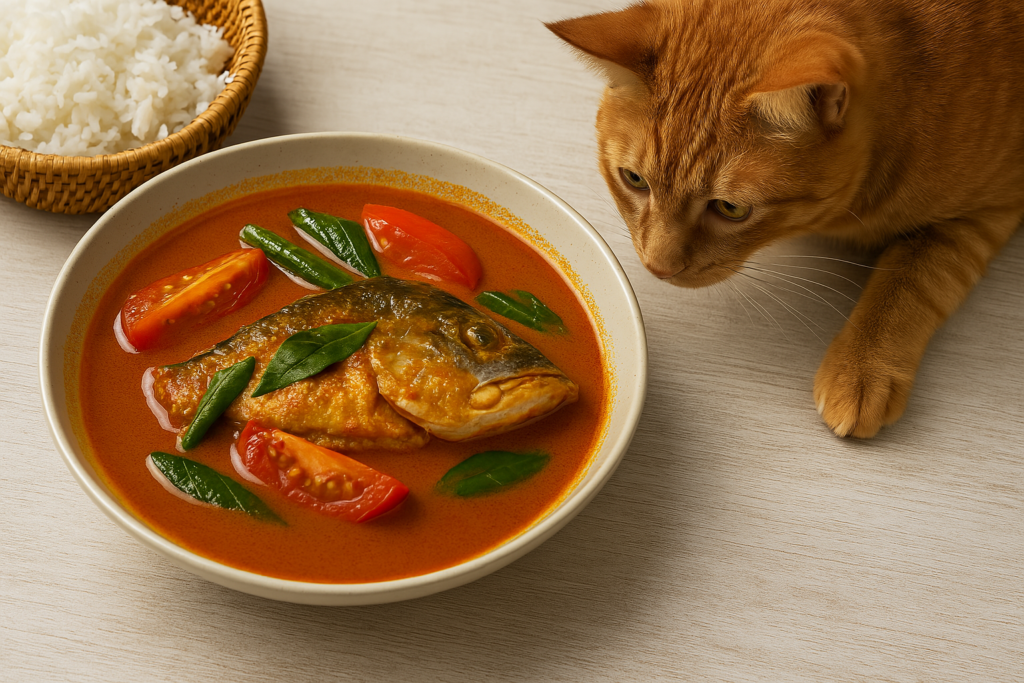
/fɪʃ hɛd ˈkʌr.i/ — noun: A bold, spicy dish from Singapore and Malaysia, fish head curry is made by simmering a whole fish head (usually red snapper) in a rich, aromatic curry with vegetables like okra, eggplant, and tomatoes. The dish blends Indian and Chinese culinary influences and is served family-style with rice. Despite its intimidating name, the fish head is considered the most flavorful part, with prized cheek meat and tender textures. It’s both a cultural experience and a culinary ritual—flavorful, dramatic, and beloved across generations.
At a bustling hawker stall in Kuala Lumpur, the scent of curry leaves and chilies lured in a wandering stray cat, drawn by the sizzling sounds and fragrant air. As a steaming pot of fish head curry was brought to a table, the cat crept closer, settling a polite distance away with wide eyes and twitching whiskers. One diner noticed and slipped the cat a piece of plain fish meat—sans spices—and gently offered it. The cat accepted with a satisfied purr, its curiosity rewarded. In the colorful world of Southeast Asian street food, even the neighborhood animals seem to know when something truly delicious is on the menu.
8. Gatvol
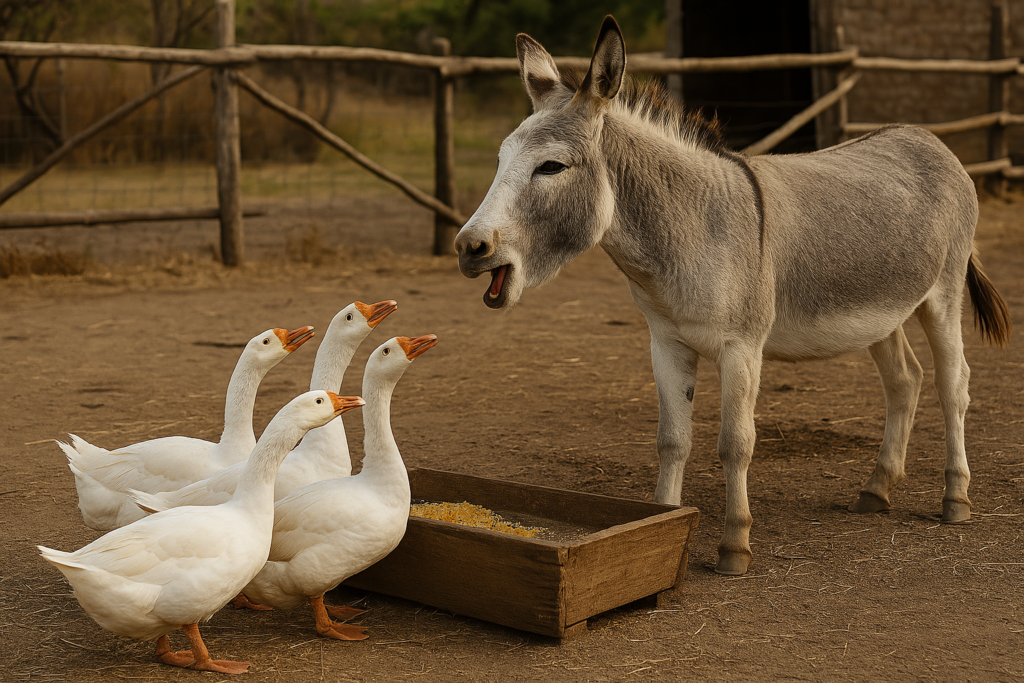
/ˈxʌt.fɒl/ — adjective: In South African English, gatvol expresses being completely fed up, irritated, or exhausted. It translates from Afrikaans as “full to the butt,” a vivid idiom that colorfully conveys reaching your limit. Whether it’s over a frustrating situation, nagging complaints, or general life burnout, being gatvol means your patience is done and dusted. Though it can sound intense, the word is often used casually in daily speech—especially when someone’s just had enough.
At a rural rescue farm in the Karoo, one of the donkeys had grown visibly gatvol with the local flock of geese who constantly stole food from his trough. Each morning, he’d approach the feed station only to be flanked by honking, flapping nuisances. One day, he simply turned and brayed loudly, startling the geese into retreat. A visiting volunteer laughed, saying, “Even the animals here get gatvol.” The donkey resumed eating, tail flicking with satisfaction, proving that exasperation knows no species.
9. Gigil

/ˈɡɪɡɪl/ — noun: A uniquely Filipino word, gigil describes the overwhelming emotion felt when seeing something unbearably cute, leading to a physical reaction—clenched fists, squeals, or the desire to pinch or hug. Babies, animals, or acts of affection often trigger it. Though difficult to translate directly into English, gigil is widely understood in the Philippines and is used to express joyful frustration at cuteness overload. It’s one of those words that makes you feel something just by saying it.
At a wildlife sanctuary outside Manila, a group of children gathered around an enclosure housing newly rescued slow lorises. As the tiny, wide-eyed primates nibbled on fruit with their delicate fingers, the children squealed and hugged themselves, unable to handle the cuteness. One girl clutched her cheeks and whispered, “Nakakagigil sila!”—they’re so gigil-inducing! Even the staff, used to seeing them daily, admitted the lorises’ calm blinking and fuzzy faces still gave them gigil now and then. It was clear in that moment that language might try to explain it, but only a loris could truly unleash it.
10. Half-boiled egg
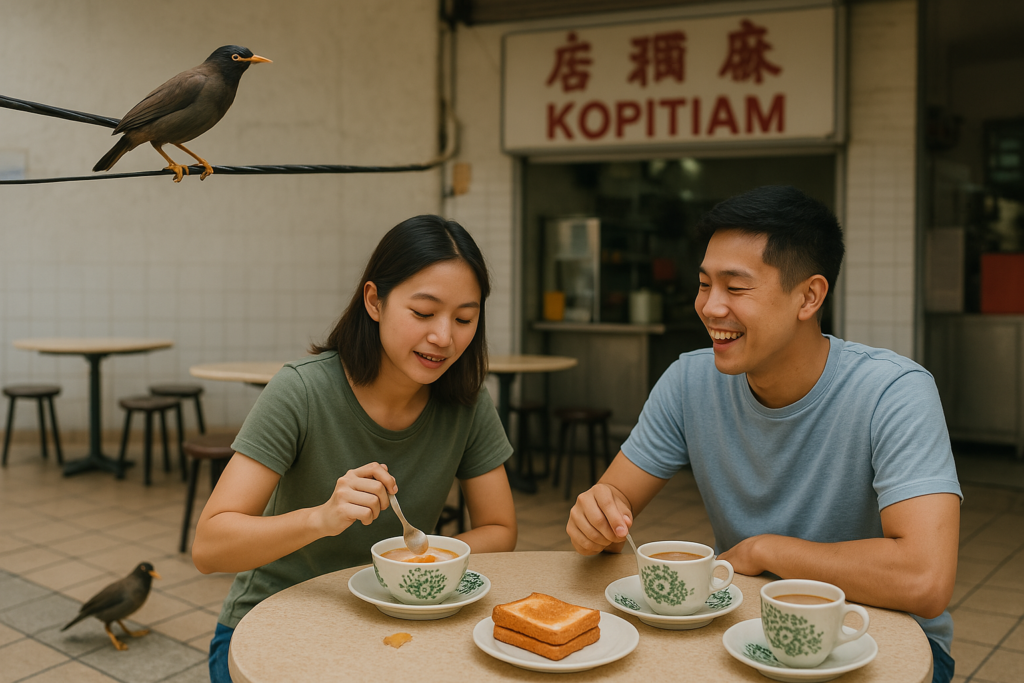
/ˌhɑːf ˈbɔɪld ˈɛɡ/ — noun: In Malaysian and Singaporean cuisine, a half-boiled egg is gently cooked by steeping it in hot water until the whites are just set and the yolk remains soft and runny. Served with soy sauce and white pepper, it’s typically paired with kaya toast and local coffee for breakfast. Unlike Western-style soft-boiled eggs, these are cracked into a bowl and stirred before eating. Silky and nostalgic, they’re a comfort food staple found in kopitiams and home kitchens alike.
Early one morning at a Kopitiam café in Johor Bahru, a mynah bird perched itself on a wire near a table where a young couple enjoyed their half-boiled eggs. As one of them stirred the mixture, the bird eyed the motion curiously. A small piece of toast crust fell to the floor, and the bird swooped down, pecked once, and flapped back up to its perch. It wasn’t the egg—but it was close enough. In Southeast Asia, even the birds know when breakfast is worth showing up for.
11. Kababayan

/ˌkɑː.bəˈbaɪ.jən/ — noun: In Filipino, kababayan means “fellow countryman” or “compatriot.” It expresses connection and shared identity among Filipinos, both within the Philippines and throughout its global diaspora. Whether someone’s from the same town or just the same flag, kababayan affirms unity and mutual respect. You’ll hear it in casual greetings, online groups, or even as a way to find solidarity in a crowd. It’s not just about geography—it’s about heart.
At a nature center in California, two volunteers met while cleaning outdoor tortoise enclosures. As they chatted, they discovered they were both from the Philippines. One smiled and said, “Ah, kababayan pala tayo!”—so we’re from the same country! Their bond deepened instantly. Even as they worked side-by-side caring for slow-moving reptiles, that single word made them feel a little more at home.
12. Kaya
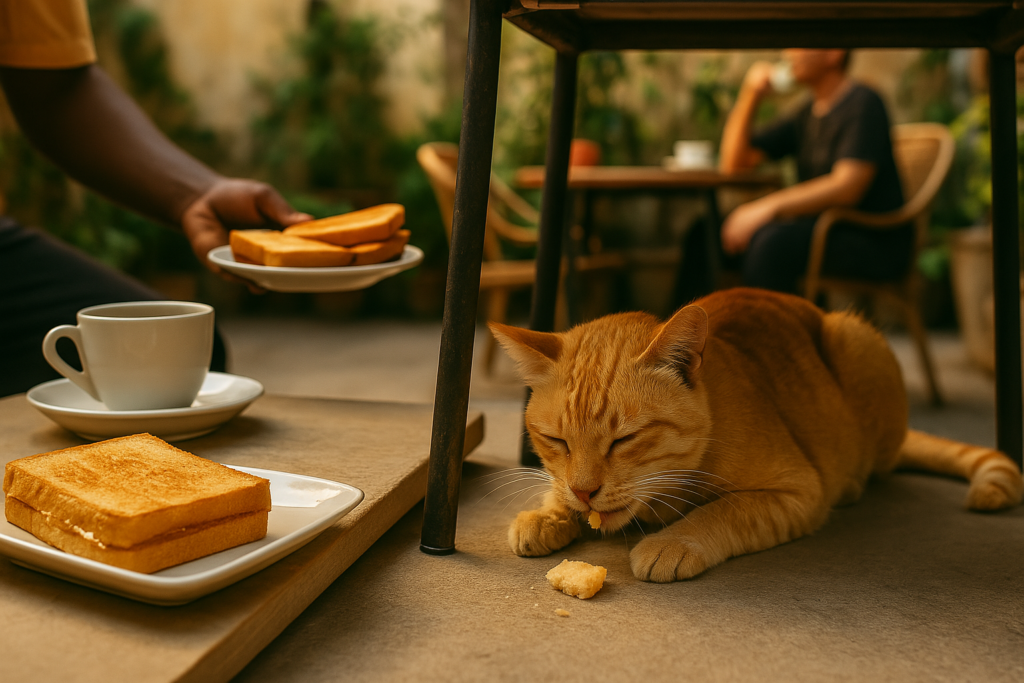
/ˈkaɪ.jə/ — noun: Kaya is a coconut jam made with eggs, sugar, and pandan, popular in Malaysia and Singapore. Thick, creamy, and sweet, it’s often spread on toast and paired with half-boiled eggs and coffee for a quintessential Southeast Asian breakfast. The name means “rich” in Malay, referring to both the taste and texture. Kaya can be homemade or store-bought, and it’s deeply rooted in Peranakan culture, blending culinary influences from Chinese and Malay traditions.
In a sunny courtyard café in Penang, a cat stretched lazily beneath a table as customers sipped kopi and munched kaya toast. The server brought out a fresh batch of golden-brown slices slathered with kaya, their sweet aroma instantly attracting the café’s unofficial feline resident. One diner noticed and slipped the cat a piece of plain toast, which it accepted with slow, deliberate bites. Though the cat couldn’t taste the kaya, it basked in the same cozy contentment the dish always seemed to bring. For humans and animals alike, breakfast here felt like a quiet ritual of home.
13. Kaya toast
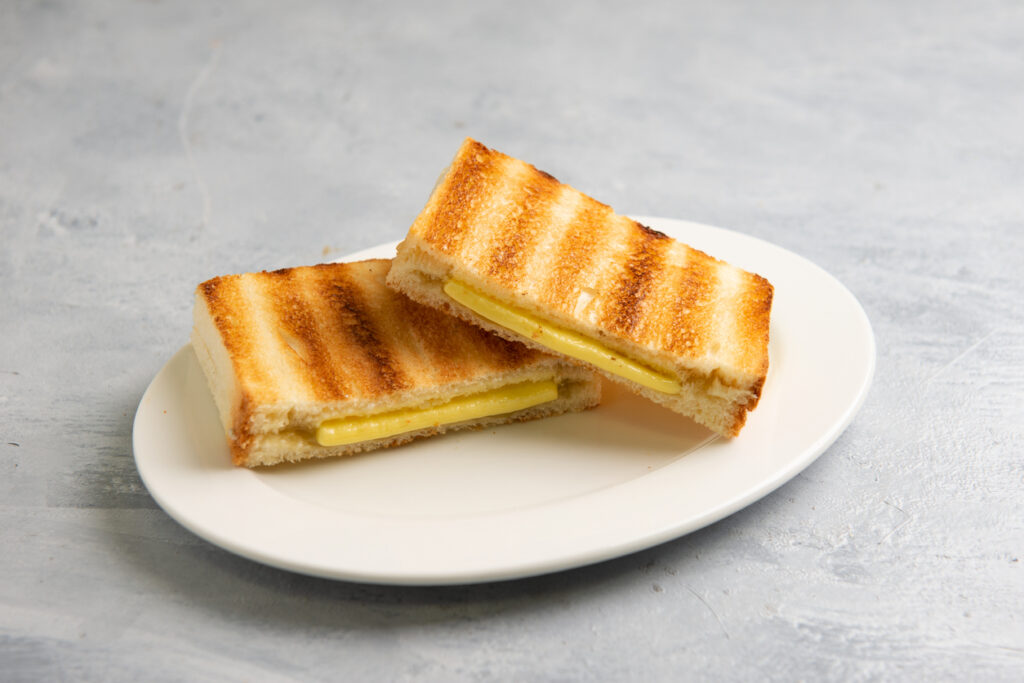
/ˈkaɪ.jə toʊst/ — noun: Kaya toast is a beloved breakfast staple in Singapore and Malaysia, made by spreading kaya jam and cold butter between slices of toasted bread. The combination of sweet coconut and creamy butter is uniquely satisfying, especially when dipped into runny half-boiled eggs. Served at traditional kopitiams, kaya toast has become a cultural icon, representing comfort, heritage, and the everyday joy of a simple meal. It’s fast, flavorful, and deeply nostalgic.
Outside a bustling kopitiam in Singapore, a pair of pigeons pecked at crumbs beneath a table where a young couple enjoyed their morning kaya toast. As the waiter passed by with a new plate for another customer, the buttery aroma made the birds pause and tilt their heads, clearly intrigued. One piece of crust landed near them, and they wasted no time snapping it up. While humans savored the sweet richness of the toast, the birds made do with their own improvised version—reminding everyone that good food rarely goes unnoticed, no matter the species.
14. Ketupat
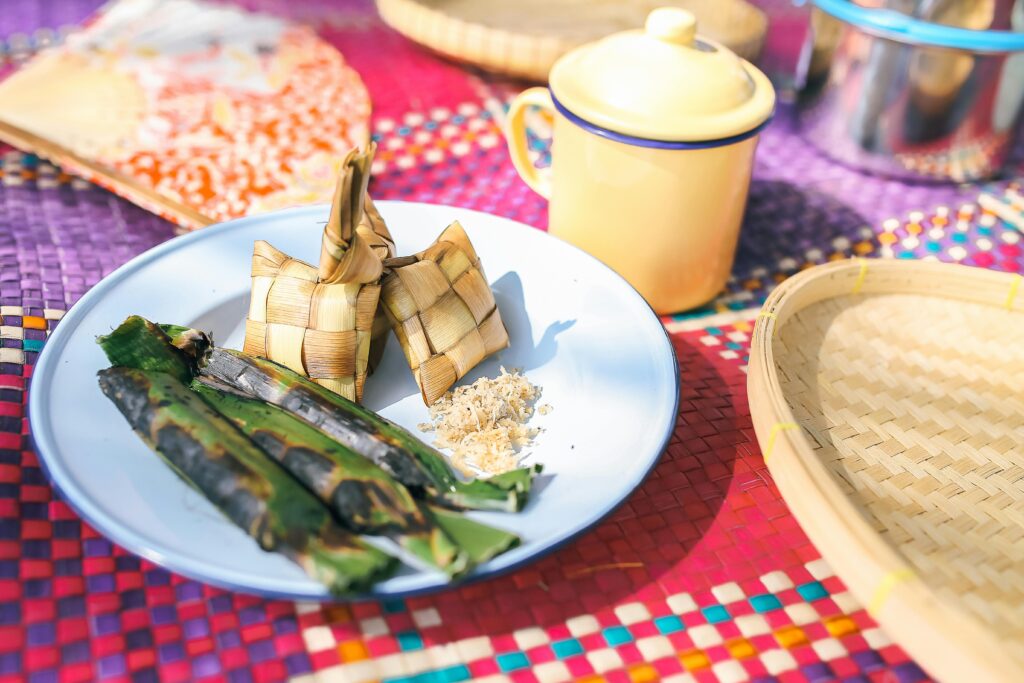
/kəˈtuː.pæt/ — noun: Ketupat is a Southeast Asian rice cake made by boiling rice in a woven pouch of palm leaves. As the rice expands, it forms a dense, compact cube with a delicate flavor and satisfying chew. Often served during Eid and other festive occasions, ketupat is usually paired with spicy meats, peanut sauce, or rendang. Beyond its culinary role, it carries deep cultural symbolism—representing unity, hospitality, and celebration.
During a family gathering in Johor for Hari Raya, a curious house cat tiptoed around the kitchen, weaving between feet as women sat on mats preparing dozens of ketupat pouches. The rhythmic motions of weaving leaves and the warm scent of cooking rice filled the air. As one of the children tied off a completed pouch, the cat batted at the dangling string, earning a gentle laugh from the group. Though the cat had no interest in the food itself, its playful interruption was a familiar part of every family event—proof that even in the most traditional settings, animals have a way of making themselves part of the ritual.
15. Load

/loʊd/ — noun: In Philippine English, load refers to prepaid mobile credit used to call, text, or access the internet. Instead of buying contracts, many Filipinos buy loads in small amounts, often from convenience stores or street vendors. It’s a daily necessity and part of a fast-paced, mobile-first lifestyle. The phrase “Wala akong load” (I don’t have load) is commonly heard when someone can’t reply to a message or return a call.
At a roadside animal shelter on the outskirts of Cebu, a volunteer pulled out her phone to check in with a veterinarian but frowned when her screen flashed: No load. Nearby, a pot-bellied pig oinked in anticipation of feeding time, nudging its snout against the volunteer’s bag. She patted its head, then walked over to a sari-sari store across the street to top up. As the pig watched her go, tail swaying, it seemed momentarily concerned that its dinner might be delayed over something as small—but crucial—as a few pesos’ worth of load.
16. Ludraman
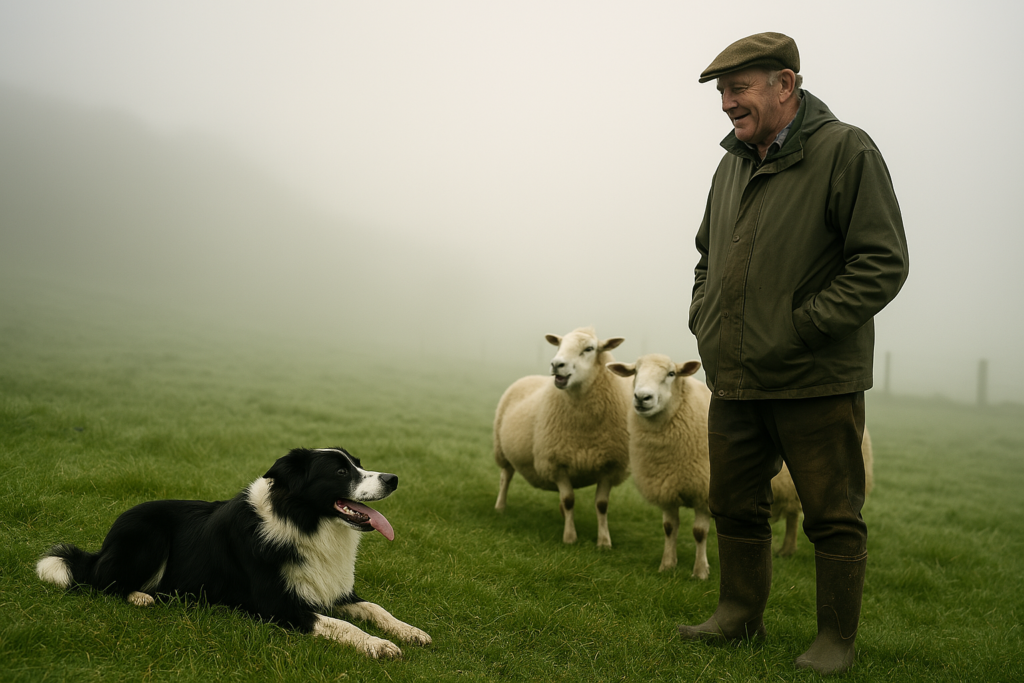
/ˈluː.drə.mən/ — noun: An Irish English term, ludraman is a mildly mocking word for someone lazy, clumsy, or generally useless. It’s often said in jest or exasperation, and you’ll hear it tossed around in families, on farms, and in local pubs. “He’s a pure ludraman” might refer to someone dragging their heels or messing up a simple task. While it sounds harsh, the word often carries affection underneath the scolding.
On a foggy morning in County Mayo, a farmer chuckled as he watched his sheepdog flop down in the field, refusing to herd the last few stragglers. “Ah, you ludraman,” he muttered, shaking his head and trudging over to do the job himself. The dog wagged its tail half-heartedly but made no move to help. One of the ewes bleated as if in agreement, and the farmer laughed out loud. It wasn’t the first time—and wouldn’t be the last—that someone on the farm had earned the title, dog or human alike.
17. Lumpia
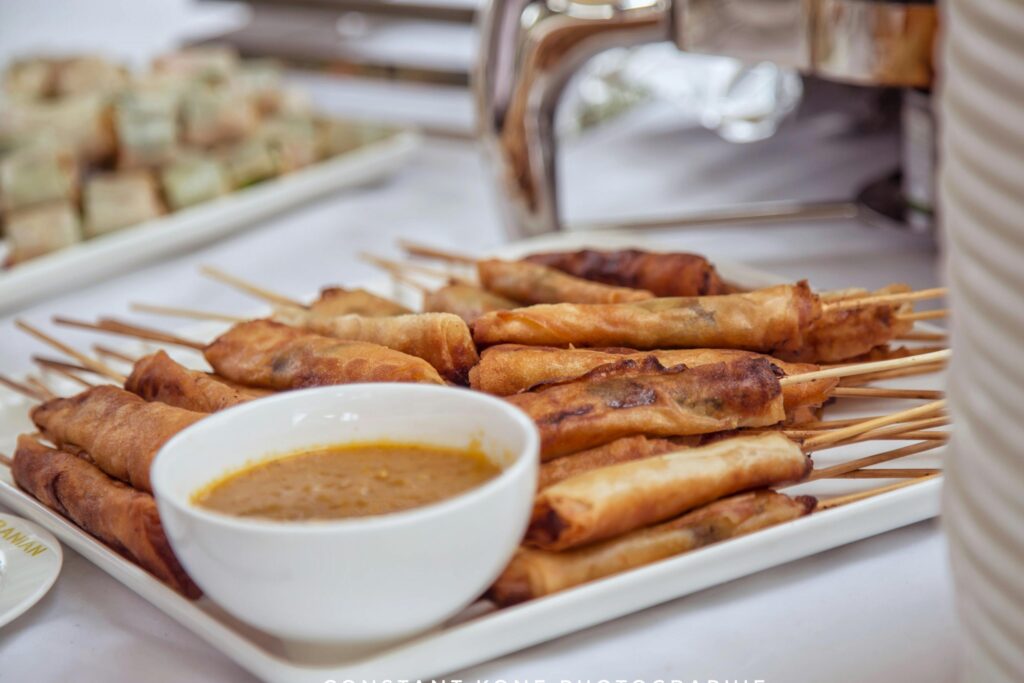
/ˈlʊm.pi.ə/ — noun: Lumpia are Filipino spring rolls, typically filled with meat, vegetables, and spices, then wrapped in thin pastry and fried until golden. Served at every party and celebration, they’re a crunchy, crowd-pleasing staple. There are many varieties, including lumpiang shanghai and lumpiang gulay, with fresh versions served unfried. Though influenced by Chinese cuisine, lumpia has become distinctly Filipino, symbolizing hospitality and home-cooked love.
During a birthday party in Quezon City, a golden retriever hovered politely near the food table, tail wagging as the scent of fried lumpia drifted through the air. The guests chuckled, knowing the dog had impeccable timing—lumpia was just being brought out, fresh and hot. One guest leaned over with a piece of plain meat filling saved from earlier prep and rewarded the pup’s patience. As the dog munched contentedly, a nearby guest joked, “Even the dog knows lumpia’s the star of the party.” And truly, in any Filipino gathering, it always is.
18. Makarapa
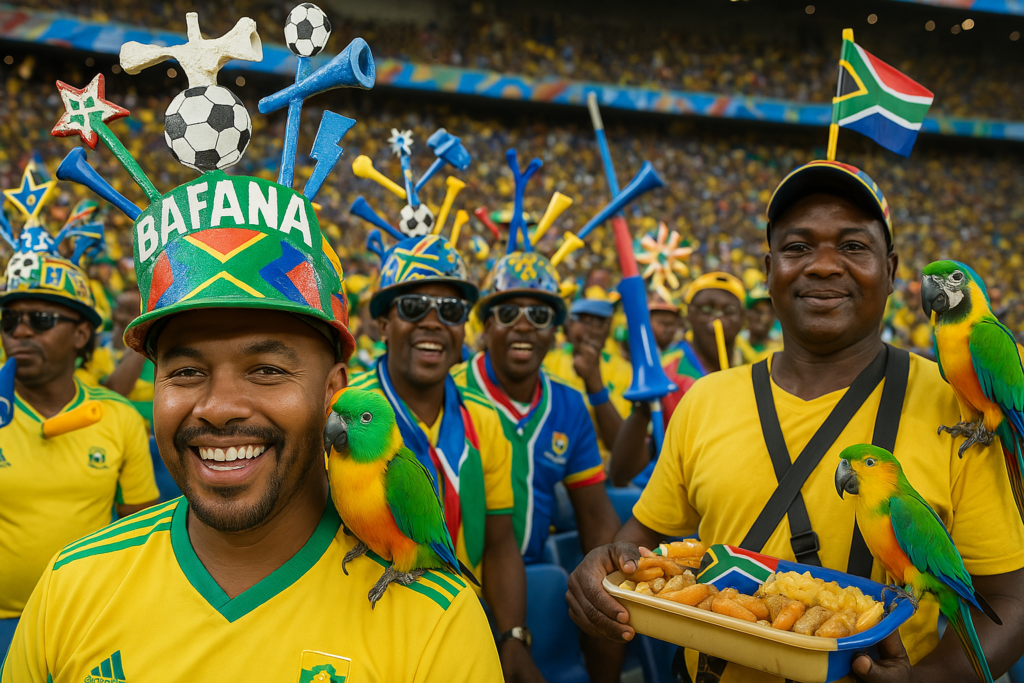
/ˌmɑː.kəˈrɑː.pə/ — noun: In South African English, a makarapa is a decorated hard hat worn by sports fans, especially during soccer matches. Originally used for safety, it became a creative canvas for team pride—with horns, flags, mirrors, and more. Each makarapa is handmade, loud, and unique. It’s not just fan gear—it’s part of South Africa’s stadium identity and an art form in its own right.
During a lively soccer match in Johannesburg, the stands were a sea of colorful makarapas, each more intricate than the next. Among the crowd, a vendor’s pet parrot perched on his shoulder, bobbing its head in rhythm with the chants and vuvuzelas. The bird’s feathers had been gently dyed in the home team’s colors, making it a feathery mascot of sorts. Fans took turns taking selfies with the parrot, its presence adding an extra layer of excitement to the already electric environment. In South African stadiums, it’s clear that team spirit isn’t limited to humans alone.
19. Mat rempit

/mæt rɛmˈpɪt/ — noun: In Malaysian English, a mat rempit is a street racer—typically a young man performing stunts and racing illegally on motorcycles. These riders are known for their daredevil moves and rebel image, often zipping through traffic without helmets. Though controversial, mat rempit culture reflects issues around youth, class, and identity in modern Malaysia. It’s a word loaded with both thrill and social tension.
Late one night near the outskirts of Kuala Lumpur, the sound of revving engines startled a sleeping dog in a roadside alley. As the pack of motorcycles sped by, lights flashing and tires screeching, the dog jumped to its feet, barking as they disappeared into the distance. A nearby stall owner shook his head, muttering, “Mat rempit again.” Though the dog didn’t understand the term, it recognized the disruption. In a city where people and animals share every corner, even the pets can sense the reckless pulse of rebellion in the air.
20. Mineral

/ˈmɪn.ər.əl/ — noun (Irish English): In Irish English, mineral is a common term for a soft drink or soda, particularly those that are carbonated and sweetened. Unlike the broader or more technical use of the word elsewhere (like dietary minerals or geology), in Ireland, it’s often used informally—someone might ask, “Would you like a mineral?” at a pub or café. The term is especially common in rural and older settings, where it maintains a certain charm and nostalgia. Though less used among younger urban speakers today, it still pops up in menus, small shops, and local gatherings with its own cozy flavor of Irishness.
At a picnic in a grassy field near Galway, a family unwrapped sandwiches while a collie lay nearby, dozing in the shade. One of the kids cracked open a fizzy orange mineral, and the sudden hiss made the dog perk up and look around, alert and wagging. Mistaking the sound for a treat bag or a thrown ball, the dog bounded over, tail in full swing. “Sorry, lad,” the boy laughed, “just a mineral.” The dog gave a hopeful sniff, then flopped back into the grass, mildly disappointed but still part of the moment.
21. Moggy

/ˈmɒɡ.i/ — adjective (South African English): In this regional usage, moggy describes something damp, musty, or unpleasantly humid—often used about clothing, weather, or indoor spaces. It conveys a sticky, cloying quality that’s hard to shake, often following a rainstorm or a bout of humidity without proper ventilation. While “moggy” is more widely known in British English as a slang term for a cat, its South African sense is entirely unrelated. Instead, it paints a picture of discomfort, the kind that clings to your skin and makes you want to change your shirt.
In a small animal shelter outside Durban, the volunteers opened the kennel doors after an overnight rain left the space feeling stuffy and moggy. The dogs, restless and panting, paced eagerly near the exits, their coats slightly damp from the humid air. As the sun broke through the clouds, one of the workers remarked, “Let’s get this mogginess out before it sticks to everything—including the pups.” With windows wide and fans humming, the space began to freshen, and the animals finally settled into comfortable afternoon naps.
22. Morto
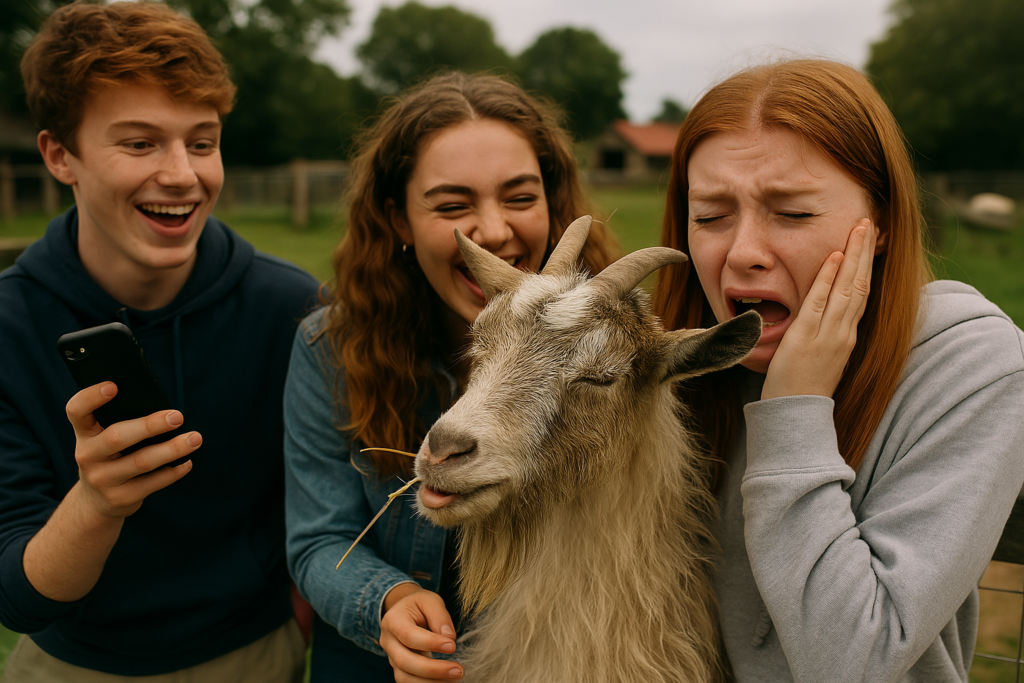
/ˈmɔːr.toʊ/ — adjective (Irish English): Morto is a slang expression used to describe someone who is extremely embarrassed or mortified—often in a lighthearted or exaggerated way. It’s commonly used in teenage and young adult conversations in Ireland, especially when recounting awkward moments, fashion disasters, or social blunders. While the root of the word likely comes from “mortified,” morto carries a more casual, humorous tone. It’s the kind of word you’d hear after tripping in front of a crowd or accidentally waving back at someone who wasn’t waving at you. Dramatic? Yes. Accurate? Also yes.
At a petting zoo just outside Dublin, a group of teens was posing for selfies with a shaggy goat who seemed unusually photogenic. As one girl knelt beside it for a close-up, the goat suddenly sneezed—right in her face. Her friends burst into laughter while she wiped goat snot off her cheek and shouted, “Ugh, I’m morto!” The goat looked unbothered, chewing away at a straw hat it had stolen from another guest. Her embarrassment, while very real, became the most retold story of the afternoon.
23. Nasi lemak

/ˈnɑː.si ləˈmɑːk/ — noun: A beloved dish in Malaysia and parts of Singapore and Indonesia, nasi lemak literally translates to “rich rice,” a name that refers to the fragrant rice cooked in coconut milk and pandan leaf. Traditionally served with spicy sambal, crispy anchovies, toasted peanuts, hard-boiled egg, and cucumber slices, it may also include fried chicken, rendang, or other regional sides. Originally eaten for breakfast, nasi lemak has evolved into an all-day favorite and national symbol of culinary pride. Balanced in flavor, texture, and presentation, it captures the heart of Malay cooking—comforting, layered, and boldly flavorful.
At a rustic roadside eatery in Penang, a macaque sat perched on a low fence, eyeing the patrons as they unwrapped their banana-leaf packets of nasi lemak. One diner left their plate unattended for a moment too long, and the monkey seized the chance, snatching a boiled egg with swift precision. Laughter broke out among the guests, and the staff playfully scolded the cheeky thief, who clambered up a tree with its prize. “Even the monkeys know good food,” someone joked. In that moment, nasi lemak proved irresistible to all species present.
24. Otak-otak
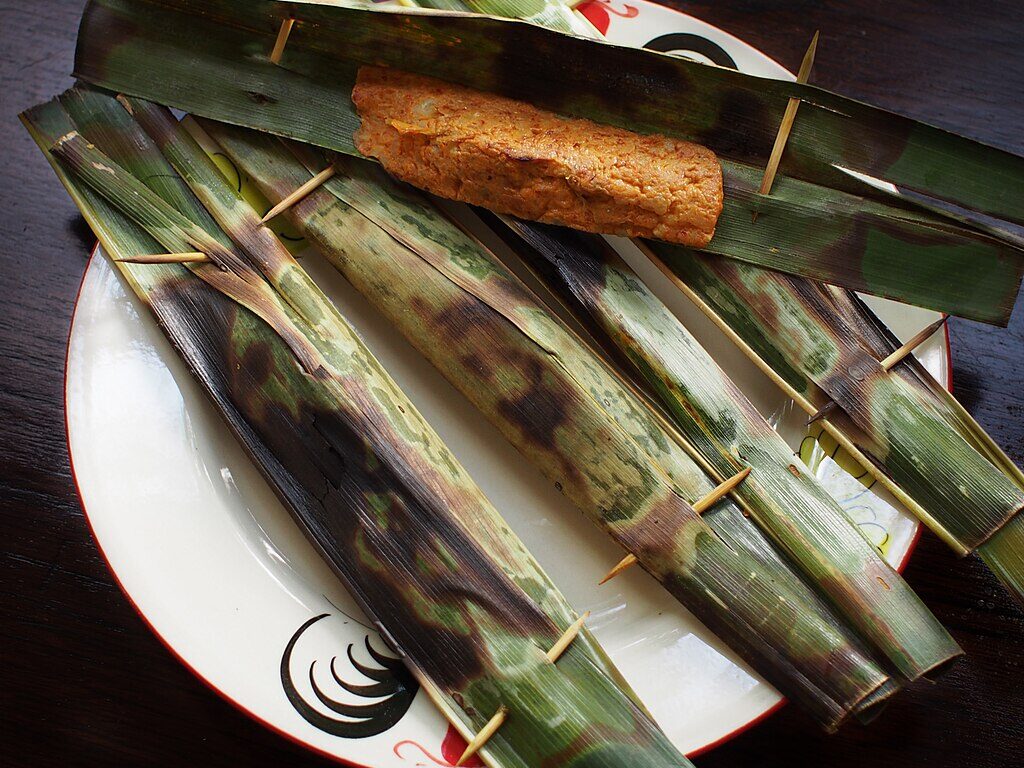
/ˈoʊ.tɑːk oʊˈtɑːk/ — noun: Otak-otak is a Southeast Asian delicacy made from ground fish mixed with spices, coconut milk, and tapioca starch, traditionally wrapped in banana leaves and grilled or steamed. The name, which translates to “brains” in Malay and Indonesian, refers not to its contents but its soft, mousse-like texture. Commonly found in Malaysia, Indonesia, and Singapore, this savory snack varies by region but always features aromatic herbs like lemongrass, galangal, and chili. Whether eaten on the go from a hawker stall or served as a side in a larger meal, otak-otak is beloved for its smoky, spicy, and slightly sweet complexity.
In a fishing village near Johor, cats wandered lazily around the outdoor market where vendors sold skewers of freshly grilled otak-otak. As one cook fanned the charcoal flames, the scent drew a chorus of meows from beneath the cart. Though the spicy blend was far too fiery for feline palates, a few soft scraps of plain fish were flicked down as a peace offering. The cats accepted with grateful flicks of their tails, lying down nearby as living proof that where there’s fish—even in mousse form—there will always be an audience.
25. Pinoy

/ˈpɪn.ɔɪ/ — adjective: Originally a noun, Pinoy has also gained traction as an adjective in Filipino English, used to describe anything that relates to the Philippines or its people, culture, food, or identity. It’s a term of pride, affection, and belonging, often used by Filipinos both at home and in the global diaspora. From “Pinoy humor” to “Pinoy pride,” the word encapsulates a national identity marked by resilience, creativity, and warmth. Though informal, it’s widely embraced in everyday language and often used in media, branding, and pop culture.
At a community farm in California run by Filipino immigrants, a group of volunteers gathered for a weekend fundraiser featuring all things Pinoy—from adobo and pancit to folk dances and bamboo games. One of the highlights was a petting zoo corner with native Philippine goats, including a particularly vocal one wearing a festive red sash. Children giggled as it bleated in rhythm with the music blaring from a karaoke machine. “Even the goat’s got Pinoy spirit,” someone joked. It was a playful reminder that culture can be felt in food, music, and even the company of animals.
26. Salakot

/ˌsɑː.ləˈkɒt/ — noun: A salakot is a traditional wide-brimmed hat commonly worn in the Philippines, historically made from materials like rattan, bamboo, or nipa palm. Shaped like an inverted bowl or cone, it offers protection from both sun and rain and has long been associated with farmers, fishermen, and soldiers. Some versions of the salakot are plain and practical, while others—especially those worn by officials during Spanish colonial times—were ornately decorated. Over time, it became more than just headwear; it turned into a symbol of Filipino identity, resourcefulness, and connection to the land.
On a rice farm in Nueva Ecija, a carabao trudged through muddy paddies while its handler, shaded beneath a hand-woven salakot, guided it with quiet commands. Nearby, an egret perched comfortably on the animal’s broad back, enjoying the slow ride across the field. The farmer wiped sweat from his brow and glanced up at the cloudless sky, silently thanking his hat for its protection. Beneath the brim of the salakot, tradition lived on—not just in the tools of the trade but in the timeless partnership between people, animals, and the land.
27. Sando

/ˈsæn.doʊ/ — noun: In Philippine English, a sando is a sleeveless undershirt or tank top, typically made of cotton and worn in hot or humid weather. Though originally intended as an undergarment, the sando has become a common sight as casual outerwear, especially among men in informal or home settings. It’s associated with comfort, coolness, and simplicity—practical for a tropical climate and part of everyday life. The term is believed to have originated from the Spanish word “sándalo,” a reference to sandalwood, although the link is more linguistic than literal. Today, sando evokes familiarity, home life, and neighborhood afternoons.
In a quiet alleyway in Manila, a man sat in a plastic chair wearing a faded white sando, lazily fanning himself as he fed leftover rice to the neighborhood’s resident stray dog. The dog, used to these midday rituals, wagged its tail in anticipation as the man scraped the last grains from a plate. A nearby cat eyed the scene from a windowsill, uninterested in the rice but alert to any fish bones that might follow. Shirtless but shaded, the man chuckled, “Even the dog knows this sando means it’s chill time.” And in that moment, it absolutely was.
28. Seshweshwe

/ˈʃwɛʃ.wɛʃ.wɛ/ — noun: Seshweshwe is a printed cotton fabric widely used in South Africa, particularly in traditional Basotho and Xhosa clothing. Recognizable by its intricate geometric patterns and rich indigo, brown, or red hues, the textile carries both cultural and historical significance. Originally introduced by European settlers in the 19th century, seshweshwe was quickly adopted and reinterpreted by local communities. Today, it’s worn at weddings, festivals, and other formal gatherings, often tailored into dresses, skirts, and headwraps. It’s a symbol of heritage, femininity, and national pride—where fashion meets identity.
At a heritage fair in Cape Town, goats grazed in a penned-off area near a group of women modeling vibrant seshweshwe gowns. As music played, one curious goat trotted closer, drawn to the movement of a swishing skirt. The crowd laughed as the model gently steered the animal away with a flourish of her fabric. “Even the goats know good style,” someone quipped. In that playful moment, tradition met everyday life—and the goat, knowingly or not, had wandered into fashion history.
29. Sharp-sharp

/ʃɑːp ʃɑːp/ — interjection & adjective (South African English): Sharp-sharp is an informal expression used as a greeting, farewell, or affirmation. It conveys agreement, acknowledgment, or enthusiasm and is common in township and urban slang across South Africa. Saying “sharp” once can mean “okay” or “cool,” while “sharp-sharp” adds extra emphasis—kind of like saying “all good!” or “right on!” It’s used between friends, co-workers, or even strangers in casual, friendly exchanges. Quick, upbeat, and flexible, it has become a linguistic staple in everyday South African interactions.
Outside a roadside animal clinic in Soweto, a young man handed off a rescued puppy to a vet tech, giving a nod and a casual “Sharp-sharp.” The vet tech responded with a smile and a matching “Sharp-sharp,” cradling the puppy as it nuzzled into her arm. A parrot in a nearby cage squawked loudly, mimicking the phrase to the delight of everyone nearby. The bird’s version came out as “Sharrrrrrp!”—but the spirit was the same. Even in the animal world, the rhythm of everyday kindness echoed back.
30. Shweshwe
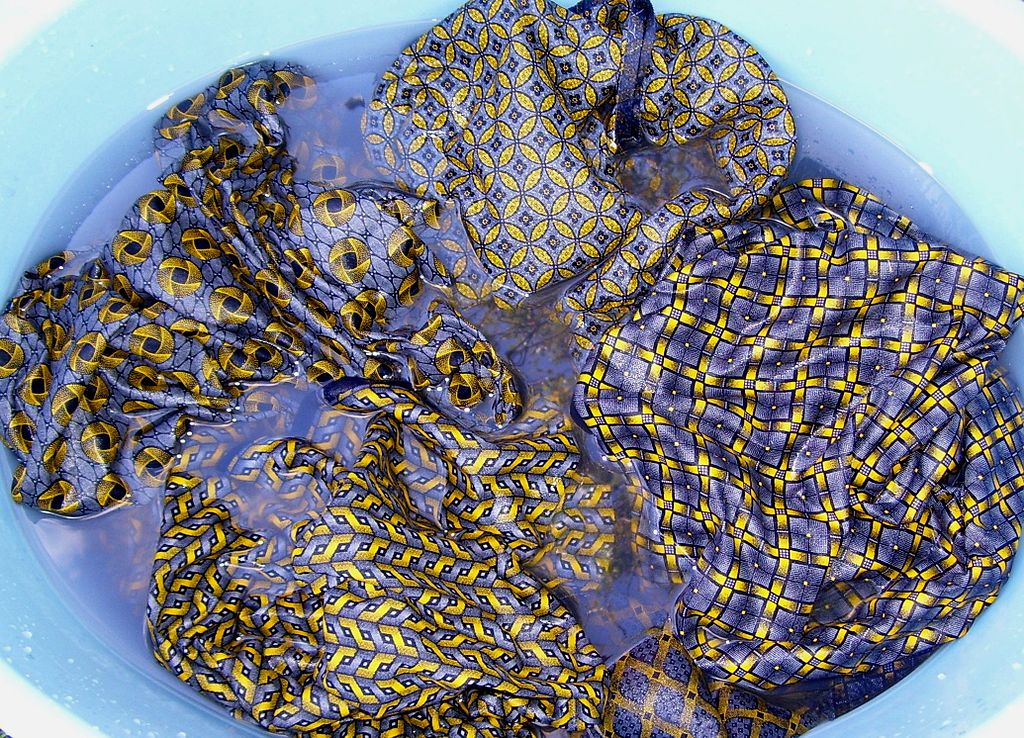
/ˈʃwɛʃ.wɛ/ — noun: Shweshwe is a term used in South African English to refer to a distinctive dyed cotton fabric known for its bold geometric patterns and deep indigo, brown, or red colors. Though it shares its roots and look with seshweshwe, the term shweshwe is often used more broadly and casually to describe clothing made from this fabric. It holds cultural importance among the Xhosa, Sotho, and Tswana people and is worn during weddings, traditional rites, and national celebrations. Beyond its heritage, it’s also a fashion statement—blending modern cuts with traditional prints in a proudly South African way.
At a community farm in the Eastern Cape, schoolchildren arrived for a heritage day performance dressed in matching shweshwe outfits, each tailored slightly differently to show personality. As they practiced their song near the goat enclosure, one particularly vocal goat bleated on cue as if trying to join the chorus. The children laughed, pausing mid-verse to pet the animal, who seemed proud of its impromptu solo. The teacher joked that even the livestock had a sense of tradition. Wrapped in rhythm, print, and play, the moment was a perfect harmony of past and present.
31. Skabenga

/ˈskə.bɛŋ.ɡə/ — noun (South African English): Skabenga is a Zulu word meaning “hooligan” or “rogue,” and in South African culture, it has taken on a surprisingly affectionate twist—especially about a real-life hotel cat. The name was famously given to the long-time feline resident of the Oyster Box Hotel in Durban. Though “skabenga” originally implied a troublemaker or rascal, the word has been softened over time to convey cheeky charm, especially when applied to pets or people with a rebellious streak.
At the posh Oyster Box Hotel, Skabenga the cat became a legend, lounging in the lobby, stealing shrimp from plates, and swatting at luxury heels with total indifference. During one of his many birthday parties hosted by the hotel, guests toasted the “hooligan in residence” while he curled up under the piano like royalty. Tourists snapped photos, and children lined up to pet him—as long as they were brave enough. In South Africa, it turns out, even a skabenga can be adored.
32. Spice bag
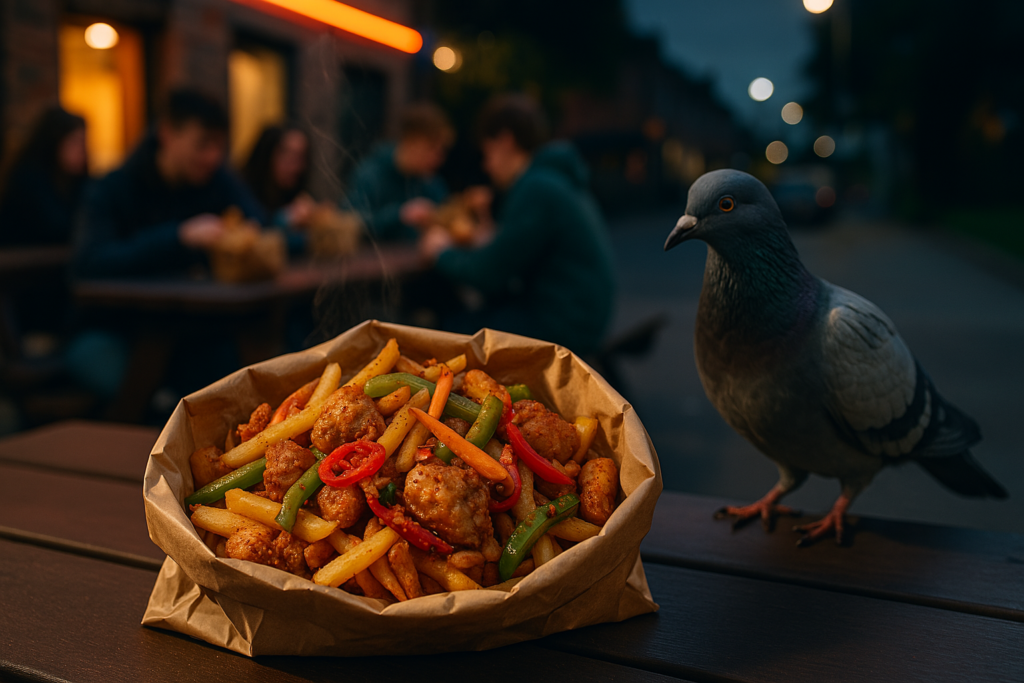
/spaɪs bæɡ/ — noun (Irish English): A spice bag is a popular Irish takeaway dish, typically consisting of deep-fried chicken (shredded or chopped), chips (fries), stir-fried vegetables, and a generous mix of chili powder, five-spice, garlic, and salt. It’s often served in a brown paper bag, giving it a humble appearance that belies its intense, addictive flavor. First emerging in Dublin Chinese takeaways in the 2010s, the spice bag has become a cult favorite across Ireland—especially after nights out. It’s the ultimate comfort food: messy, flavorful, and gloriously greasy.
Outside a chipper in Limerick, a few pigeons circled the picnic tables, drawn by the unmistakable scent of chili and fried chicken. A group of teens dug into their spice bags, steam rising in the crisp night air. One of the birds made a daring leap onto a bench, snagging a stray chip before fluttering off in triumph. “That one’s addicted,” one of the teens laughed, watching the pigeon circle back for more. In a country full of culinary classics, even the local wildlife has developed a taste for the spice bag.
33. Steamboat
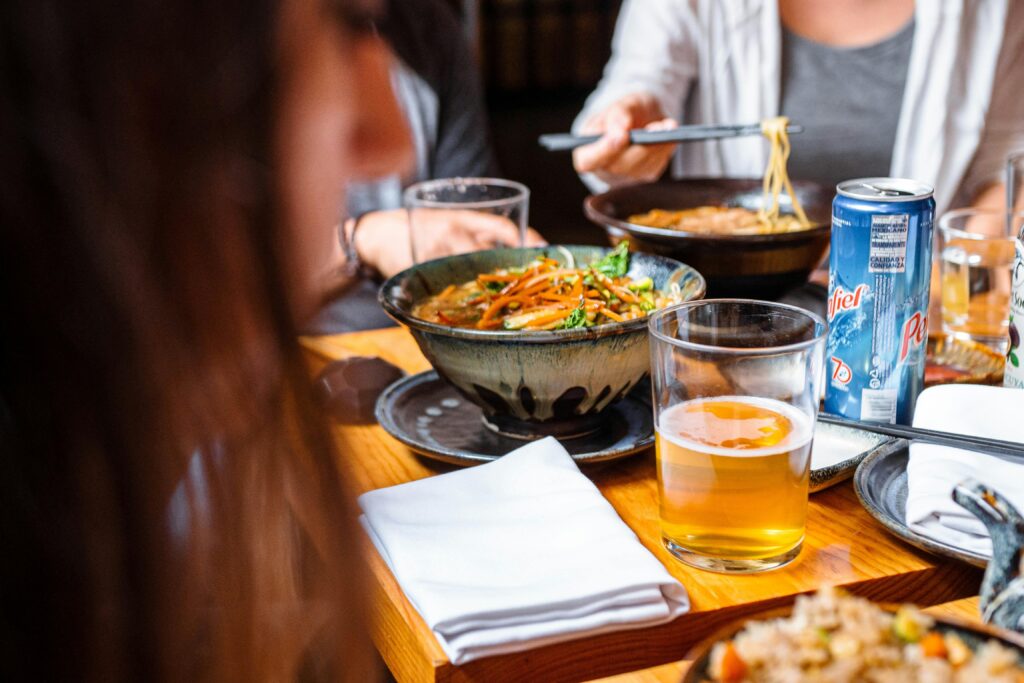
/ˈstiːm.boʊt/ — noun (Malaysian and Singapore English): Steamboat is a communal dish, also known globally as hot pot, where diners cook a variety of raw ingredients—like thinly sliced meats, seafood, vegetables, tofu, and noodles—in a simmering pot of broth at the center of the table. It’s a popular choice for gatherings and celebrations in Malaysia, Singapore, and other parts of East and Southeast Asia. The name steamboat references the constant bubbling and steaming of the broth as everyone cooks and eats together. It’s more than just a meal—it’s an interactive social experience that fosters connection and provides plenty of second helpings.
At a family dinner in Kuala Lumpur, the table was crowded with plates of fish balls, mushrooms, prawns, and leafy greens, all waiting to be dunked into the steamboat pot. As the broth bubbled, the family’s pet cat lounged beneath the table, basking in the warmth and watching every piece of seafood with hunter’s intensity. Now and then, a tail flicked as someone dropped a prawn, only to snatch it back with a grin before the cat could claim it. The feline didn’t get a taste of the meal—but it knew, with perfect certainty, that something delicious was happening.
34. Tapau

/ˈtɑː.paʊ/ — verb (Malaysian and Singapore English): Tapau means to take food to go or to wrap it up for takeaway. It’s a commonly used term in Malaysia and Singapore, borrowed from Cantonese and fully embedded in everyday English spoken across both countries. Whether someone’s grabbing lunch from a hawker stall or asking for leftovers to be packed, “Can tapau?” is the go-to phrase. Unlike formal phrases like “take away” or “to go,” tapau feels casual, local, and practical—making it a mainstay in the region’s food vocabulary.
At an open-air food court in Penang, a stall owner finished assembling a box of fried noodles and called out, “Tapau ready!” Just as the customer reached for the bag, a mischievous crow swooped down and tried to snatch a piece of shrimp from the top. A tug-of-war ensued between bird and box until the lid slammed shut with a victorious snap. The crow squawked in protest and flapped away while the customer laughed. “Even the birds know our food’s worth tapau-ing,” he joked, holding his lunch a little tighter this time.
35. Terror

/ˈtɛr.ər/ — adjective (Philippine and Malaysian English): In classroom slang across the Philippines and parts of Malaysia, terror is used to describe a teacher or professor who is extremely strict, intimidating, or demanding. Far from referencing actual fear, the term is usually applied with a mix of awe, anxiety, and reluctant respect. A “terror prof” is one whose standards are sky-high, who never misses a mistake, and whose exams are the stuff of legend. Though dreaded by many students, terror teachers are also known to inspire hard work and—often in hindsight—real admiration.
At a veterinary school in Manila, the students whispered nervously as the most feared instructor entered the exam room, clipboard in hand and expression unreadable. Even the lab’s resident beagle, normally relaxed around students, stiffened and sat up straight when the professor approached. As the instructor checked the dog’s harness and offered a single approving nod, the students exhaled with visible relief. “Even the dog knows she’s terror,” one muttered. The beagle wagged its tail, perhaps proud to have passed inspection under the strictest eyes on campus.
36. The Hell-In
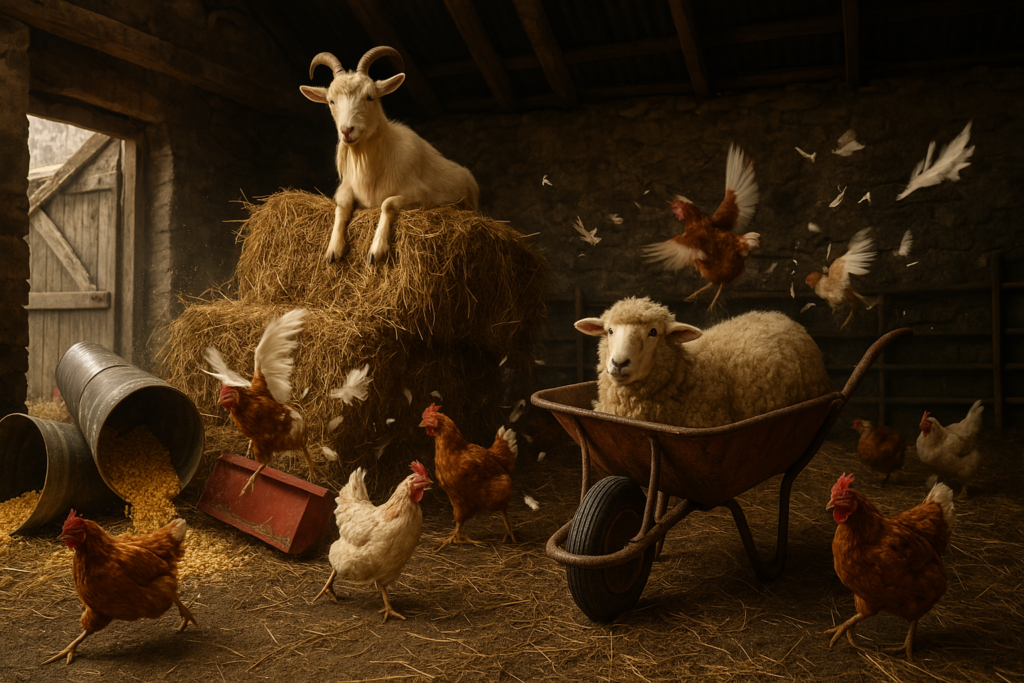
/ðə hɛl ɪn/ — noun (Irish English): The hell-in is a colloquial Irish expression used to describe a state of disorder, upheaval, or chaotic trouble—essentially, when everything has gone wrong or is in a state of “absolute hell.” It’s often used humorously or dramatically, and you might hear someone say, “The place was the hell-in” after a night out, a disastrous event, or even just a messy kitchen. While not as common outside Ireland, it captures a uniquely expressive way of voicing frustration or disbelief at how badly something has turned out.
In a barn on the edge of County Clare, the early morning calm was shattered when a curious goat escaped its pen and triggered a chain reaction: knocking over feed bins, startling the hens, and toppling a carefully stacked pile of hay bales. By the time the farmer arrived, feathers were flying, and a sheep had somehow gotten stuck in a wheelbarrow. “It’s the hell-in in here,” he muttered, surveying the chaos. The goat blinked innocently from atop a haystack, chewing contentedly. The animals had started their day early—and loudly.
37. Thomasite
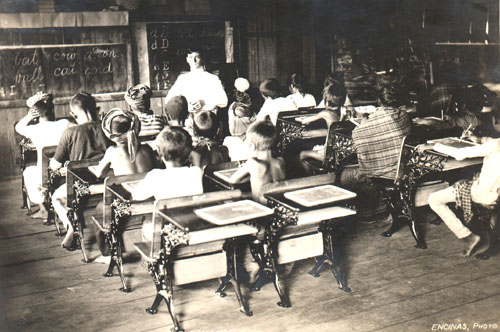
/ˈtɒm.ə.saɪt/ — noun (Philippine English, historical): A Thomasite refers to one of the American teachers sent to the Philippines in the early 1900s, following the Spanish-American War, to establish and expand the public education system. Named after the USS Thomas, the ship that brought the first major group in 1901, the Thomasites taught English and a Western-style curriculum throughout the archipelago. They played a significant role in shaping Filipino education and are remembered for their cultural impact—both celebrated and critiqued—as agents of both knowledge and colonization. The term is now largely historical, but it remains a powerful reference point in discussions of education and postcolonial identity in the Philippines.
At a heritage school museum in Iloilo, a group of students toured a recreated early 20th-century classroom, complete with wooden desks, chalkboards, and photos of the first Thomasites. In the courtyard, a pair of roaming ducks quacked noisily, startling a child who’d just sat down at one of the old desks. The guide laughed and said, “Those ducks have more attitude than some of the Thomasite pupils did!” The joke blended past and present—a reminder that while education has changed over time, the animals wandering schoolyards haven’t.
38. Tjoekie
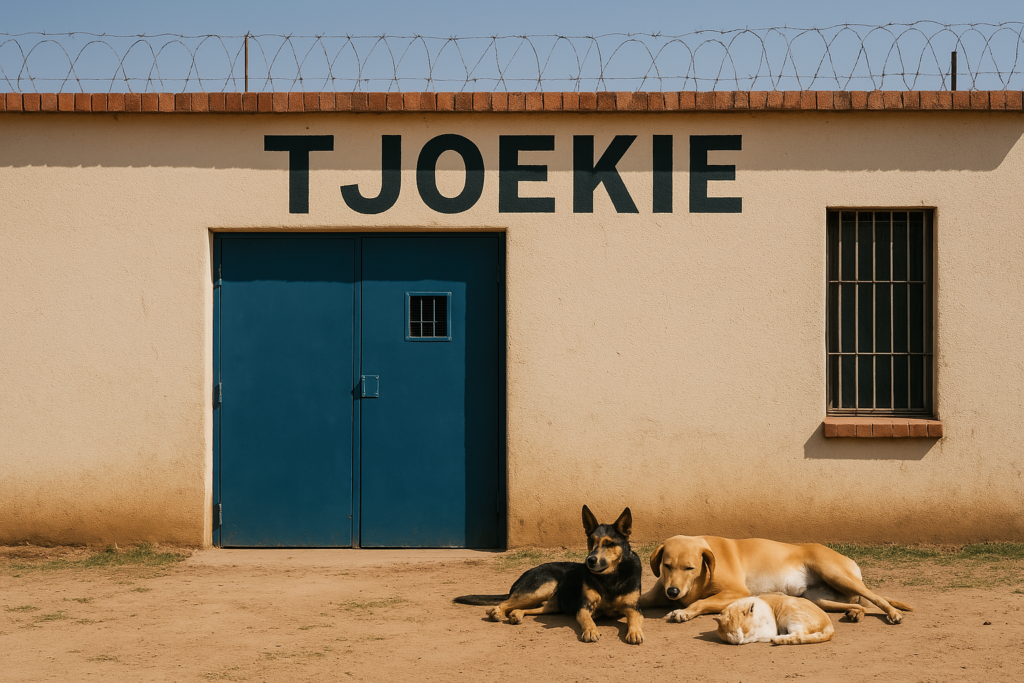
/ˈtʃuː.ki/ — noun (South African English, slang): Tjoekie is a casual, cheeky slang term for jail or prison, often used to describe a mischievous brush with the law. You’ll hear it in conversations about petty theft, schoolyard antics, or family gossip—“He landed in tjoekie again!” It softens the edge of incarceration with humor, shaped by South Africa’s blend of Afrikaans, township slang, and local English. The word carries more mischief than menace.
In a sleepy Pretoria suburb, a parrot made its great escape—and crash-landed into a nearby bakery, where it wreaked havoc in true outlaw style. It dive-bombed a tray of scones, strutted across a display of cupcakes, and left a glittering trail of sprinkles and crumbs behind. The frazzled baker finally trapped the bird under a laundry basket just as a teenager walked by and laughed, “That feathered menace belongs in tjoekie!” The parrot squawked in defiance, wings fluffed in protest. Is it only crime? Daring to taste freedom—and frosting.
39. To act the maggot

/tuː ækt ðə ˈmæɡ.ət/ — phrase (Irish English): To act the maggot means to behave in a silly, annoying, or foolish way—usually in a playful or disruptive manner. It’s often used to scold someone who’s goofing off, causing mischief, or generally not taking things seriously. While the phrase can sound harsh, it’s typically delivered with a sense of affection or exasperated humor. You might hear a teacher shout it at a student throwing paper planes or a grandparent say it to a giggling child mid-prank. It’s one of those uniquely Irish expressions that wraps reprimand and charm into one.
In a pet shop in Cork, a pair of ferrets had escaped their enclosure and were tearing around the floor, knocking over treat bins and tunneling into a display of fleece-lined dog beds. One employee, chasing them with a dustpan in hand, muttered, “Ye two are acting the absolute maggot!” A Labrador puppy watched with mild confusion as the chaos unfolded. Eventually, the ferrets were scooped up, wriggling with zero regrets. It was clear they’d earned their title fair and square.
40. Videoke

/ˌvɪd.iˈoʊ.ki/ — noun (Philippine English): Videoke is a Filipino term for a form of karaoke that includes music videos and scoring systems, often delivered through coin-operated machines found in homes, bars, restaurants, and even roadside stalls. Unlike standard karaoke, videoke lets users sing along to instrumental tracks while a screen displays lyrics alongside sometimes unrelated or humorous background videos. It’s a deeply embedded part of Filipino culture, used to celebrate birthdays, bond with friends, or simply pass the time. Whether someone can sing well or not is beside the point—what matters is heart, volume, and gusto.
One evening on the rooftop of a boarding house in Davao, a group of friends gathered for an impromptu videoke session under the stars. As one belted out a Whitney Houston ballad with more passion than pitch, the building’s resident cat jumped onto a plastic chair and yowled in harmony—sort of. The singer paused, looked at the feline duet partner, and said, “Oy, backup vocals?” Laughter erupted. Even the neighborhood animals, it seemed, couldn’t resist the lure of a good videoke night.
41. Yoh

/joʊ/ — interjection (South African English): Yoh is a versatile exclamation used to express a wide range of emotions—shock, awe, frustration, excitement, admiration, or even exhaustion. It’s one of those all-purpose expressions whose meaning depends entirely on tone and context. Say it softly, and it shows sympathy. Say it with a sharp rise, and it signals surprise. Common in informal speech across South Africa, especially in townships and urban youth slang, yoh punctuates conversation with instant emotional clarity. It’s like “whoa,” “wow,” and “ugh” all rolled into one little word.
At a wildlife rehabilitation center near Durban, a young volunteer entered the aviary only to find that a pair of mischievous parrots had chewed through a crate of dried mango treats. Feathers, wrappers, and mango bits were everywhere. “Yoh,” she said, stepping back as the culprits blinked innocently from their perch. One parrot tilted its head as if mocking her reaction. Another volunteer peeked in and added, “Yoh, they’ve been busy!” When even the parrots look smug, yoh is the only word that fits.
42. Zol

/zɒl/ — noun (South African English, slang): Zol refers to a hand-rolled cigarette containing cannabis, commonly used in informal South African speech. The term is deeply embedded in local youth and street slang, often associated with laid-back, countercultural, or rebellious behavior. Though it’s not an official term for cannabis, “smoking a zol” is a widely understood phrase across the country. The word gained even more attention after it appeared in a COVID-era public address by South Africa’s health minister—instantly becoming a viral cultural moment. Whether said in jest or in conversation, Zol speaks to how language can evolve in public and political life.
In a rural homestead outside Stellenbosch, a farmer caught sight of his goat nosing curiously around a teenager’s abandoned backpack near the fire pit. As the goat began to chew on something crinkly, the farmer rushed over and found what looked suspiciously like a homemade rolling paper tube. “What’s this, hey? You trying to turn my goat into a zolhead?” he laughed, holding it up like contraband. The goat blinked in innocence, lips still working. It was a harmless mix-up—but at that moment, even the livestock looked a little too chill.
Language is alive—and sometimes, it wears a salakot or steals your spice bag.

Whether it’s a Filipino videoke session with a backup cat singer or a Limerick pigeon swooping in for a chip, these 42 new words capture the joyful chaos of how we speak and live today. They aren’t just dictionary entries—they’re snapshots of culture, creativity, and global connection. From goats in Makarapas to parrots in tjoekie, this year’s linguistic glow-up proves that language grows from the ground up: from street slang, shared meals, inside jokes, and yes, the occasional escaped ferret.
So go ahead—tapau this list, share it with your most class friends, and maybe try using gigil the next time a puppy makes your heart explode. The English language just got 42 words richer—and a whole lot more fun.


